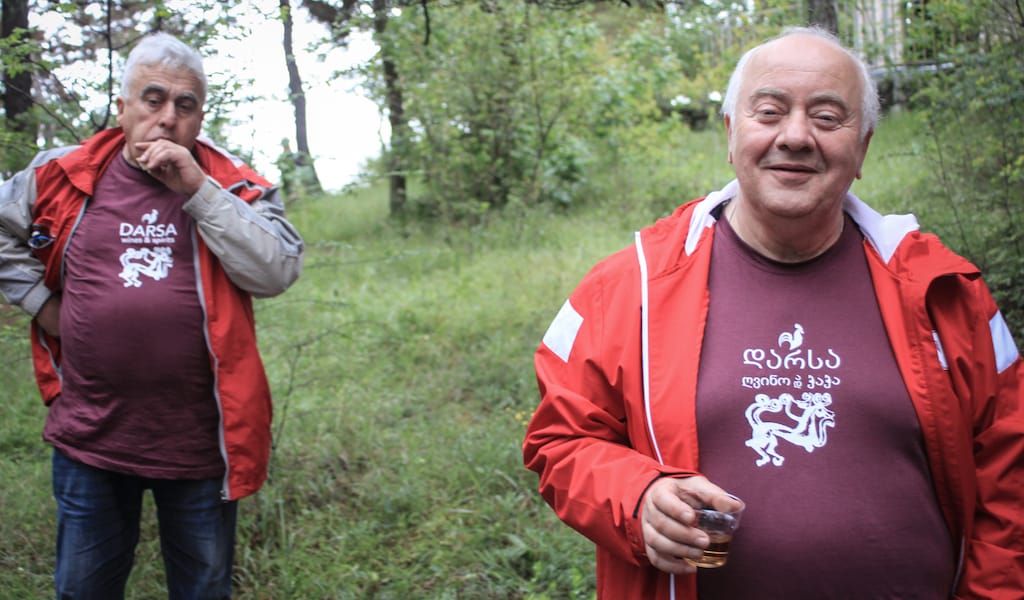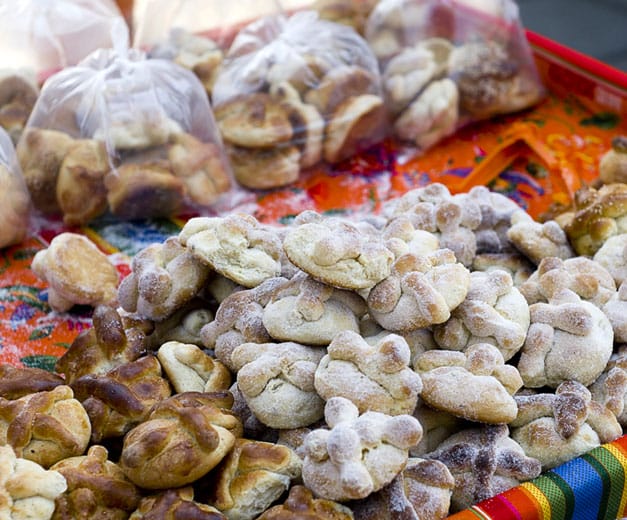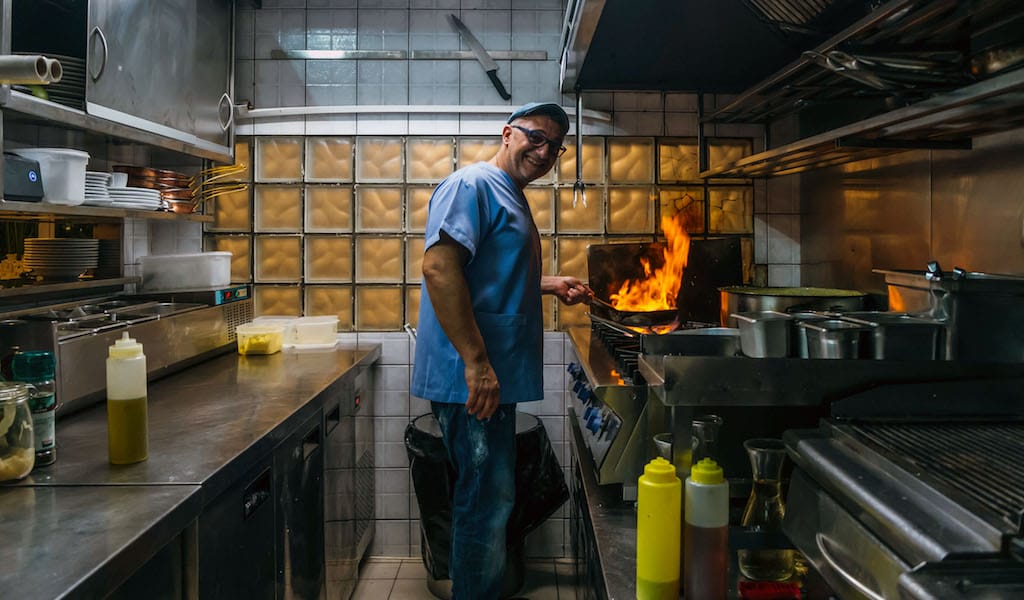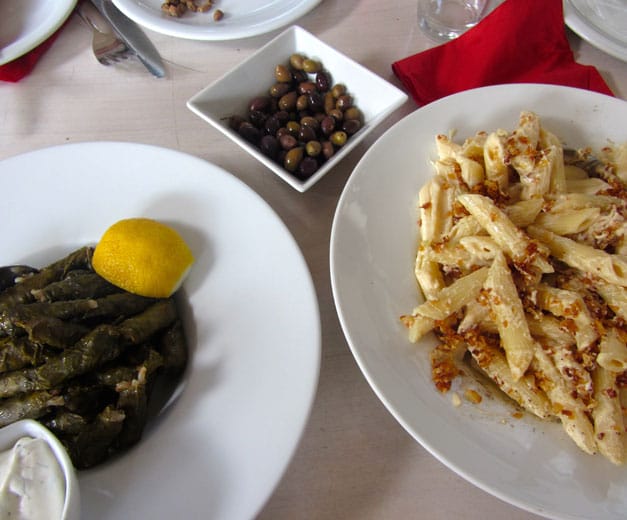Georgians swear that natural wine does not give you a hangover, but something is keeping us in bed watching superhero series on Netflix and it is not the compelling storylines. Vato Botsvadze, owner of Chacha Corner was also at Zero Compromise yesterday. He will insist in all seriousness that his morning headache was a result of the rain, which stopped just before the greatest party in Georgia started.
We’re talking about the eighth New Wine Festival, organized by the Georgian Wine Club, a group of over a half dozen wine enthusiasts who have been at the forefront of developing, promoting and educating people about Georgian wine since 2007, when they turned their internet forum into a blog and started hosting wine tastings across the country.
“When we started, there was virtually no bottled kvevri wine in Georgia,” explains Club President Malkhaz Kharbedia, referring to the traditional Georgian method of making wine in large clay vessels buried in the ground.
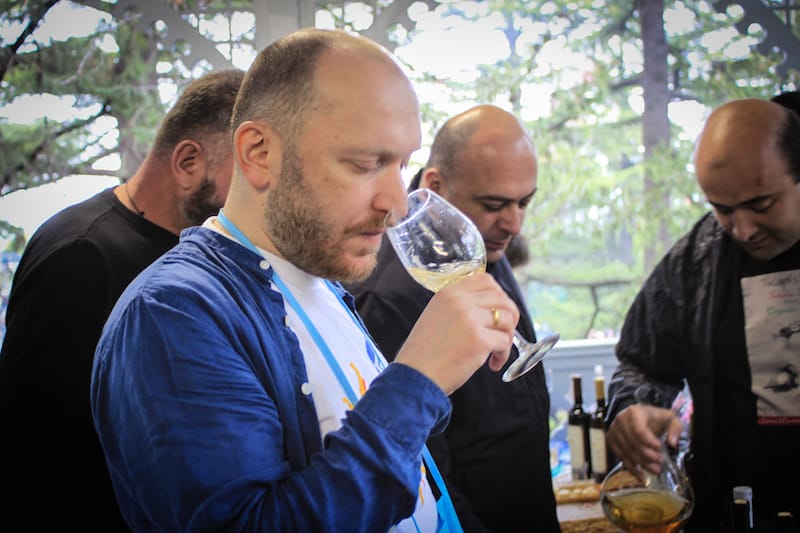
Georgia’s Soviet experience had totally devastated the country’s profound wine culture. For 70 years, companies fortified and watered down wine to meet Kremlin-directed quotas.
And when the USSR collapsed, Georgians continued to make “Caucasian Night Train” for the Russians. You would never see a corked bottle of wine on a Georgian table.
Good wine was reserved for the natives. Some companies distributed it to restaurants in aluminum beer kegs; others used jerry cans. If you were lucky, you had a relative or friend in the village who would provide you with old plastic bottles filled with their soulful, homemade natural gvino. Otherwise, you had to settle with plastic barrel plonk from a local basement “dealer.” It was still better than anything bottled and labeled.
Ironically, it was the Kremlin that rescued the industry when Russian President Vladimir Putin put an embargo on Georgian wine (and Borjomi mineral water), not because of the quality, but due to the fact that he hated President Mikheil Saakashvili. Overnight, 90 percent of Georgia’s wine export market vanished. Companies were suddenly forced to improve their product to compete with the rest of the wine-producing world.
“It was a big poke for both small and big wine companies,” Malkhaz acknowledges.
As big wineries found investors and other international markets like China, talented family winemakers began bottling and exploiting a niche market: natural vintages from the cradle of wine. With an 8,000-year history of viticulture, over 500 indigenous grape varieties and kvevri technology, these small companies have been instrumental in generating a global buzz on Georgian wine, even though kvevri wines only make up some three percent of the total wine export.
By five o’clock we have tasted more wine than Dionysus on his birthday.
The transformation has not been lost on the local market. The proletariat method of knocking back a full glass and wiping your mouth on your sleeve is giving way to sniffing and sipping at a growing number of wine bars popping up across the country. It is a transformation that is exciting to witness in a place where viticulture is practically part of the Georgian DNA.
“We are not only the cradle of wine, but we have a contemporary wine culture too. We’re going through a period of self-consciousness. We’re not just stuck in the past,” says Malkhaz, who has been a leading instigator of this awakening through the club’s activities in Tbilisi and Georgia more generally.
Inspired by the Beaujolais & Beyond Wine Festival, the Georgian Wine Club organized the first New Wine Festival in 2010. It is held on the second Saturday in May, after most winemakers have cracked open their kvevris for bottling, although the event is open to all wineries, big and small, regardless of the technology. The first festival had 17 companies and 20 family wines participating.
Today, there are over 100 companies and 130 family winemakers sharing their creations at the park. We feel like a kid in the candy store being told to help themselves to anything – all for free. Yet, remarkably, we have not seen a single stumbling drunk in this multitude of imbibers. We are all floating from tent to tent with glazed grins. The vibe is mellow bliss.

Like last year, the Imereti section is under a wooden pavilion, packed with over a dozen family winemakers. Imereti is a west Georgian region with a wetter, milder climate that produces lighter, more acidic wine. Unlike Kakheti in the east, wines here are generally made with no skin contact, only the juice is fermented.
We are delighted to see Baia Abuladze, a 25-year-old who has only been producing for a few years from her family vineyard, yet is already being recognized internationally for her fine wines. In 2016, her Tsitska-Tsolikouri won a silver medal at the Wine Grand Prix in Dusseldorf and her Krakuna-Tsitska-Tsolikouri is on shelves in the U.S., Germany and Austria.
“It’s a bit early for this,” she admits, pouring the Tsolikouri into our glass with a bright smile. “We only harvested it in late October and just bottled some for the festival.”
If you could drink young wildflowers, they would taste like this.
Fueled only by a light breakfast, we have to pace ourselves carefully. It is with a slight pang of guilt we toss out a generous pour of someone’s uninspired Krakuna when we bump into the ever-animated musicologist, Gia Khaduri.
“Hey, come on! You have to try this Saperavi,” he orders, grabbing us by the arm.
“Papari Valley?”
“Yes! You tried?”
“Not yet. But we heard a lot about it yesterday,” we say.
We make our way to Papari Valley’s owner Nukri Kurdadze, standing stoically with a glass of his black wine in hand. First we try his Rkatsiteli, Georgia’s most popular white, from Kakheti. A typical six-month maceration time with skins, stems and seeds in kvevri stuns most neophytes with its amber color, grippy tannins and rawness. Nukri’s, however, is less macho – it’s gentler and divine.
His Saperavi lives up to the hype. Called “black wine” because of the dark ruby color, this is Georgia’s most eminent grape. It can be a bit chewy, but again, Nukri lessens the grip and makes a harmonious, velvety wine you want to sip all night with the lights down low and Chet Baker on the hi-fi.
In fact, we don’t have go far to dig some cool school. Rezo Kiknadze, rector of the Tbilisi Conservatory, is blowing sax with his crack band of students swinging righteous jazz standards right here, while we bounce between Frenchmen Bastien Warskotte of Ori Wines and Vincent Jullien of Lapati Wines, two of Georgia’s leading producers of natural sparkling wine.
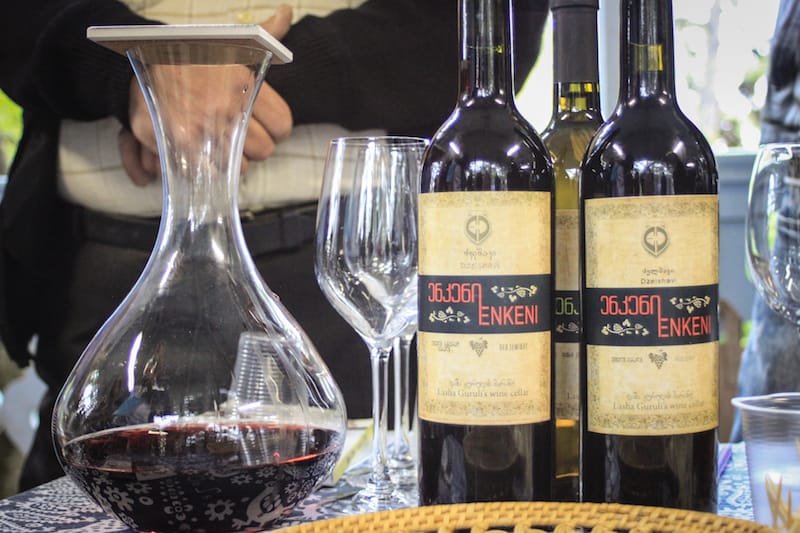
When the band takes a break, several men spontaneously break into “Mravaljamier,” an ancient polyphonic celebration song. The three part harmonies put us in a rib-humming reverie, broken only by the desire to sip more wine.
Our new friend Zoltán Kovács, a Hungarian bassoon-playing vino lover (and importer), beckons us over. “Hey, hey, hey! Come here! Try this!” he exclaims, jamming his schnoz deep into the glass. “The nose of this, I mean wow!”
Thirty-six-year-old Mikheil “Misha” Chonishvili is unmoved by the compliment and drops his 2016 Rkatsiteli into our glass. Indeed, the aroma is so vivacious it rouses four-letter expletives. And we drink. Bam! 14.6 percent alcohol with the round lushness of a deep French kiss. More cuss-laced declarations of adoration follow and still, he is as cool as a Kakhetian cucumber. If Culinary Backstreets were handing out medals today, Misha’s Chona Wines would get the gold for their Rkatsiteli, although the Mtsvane-Rkatsiteli is also deeply rewarding.
By five o’clock we have tasted more wine than Dionysus on his birthday and manage to buy a few bottles of our favorites as the winemakers are packing up. We make dinner plans with friends, turn our backs and lose them. No mind, there is one last glass of wine and another and the next thing we know, we’re slouching at home, sniffing our empty wine glass and admiring how it is still in one piece.
 October 31, 2014 Día de los Muertos
October 31, 2014 Día de los Muertos
Día de los Muertos (Day of the Dead), or at least some variation of it, has been an […] Posted in Mexico City November 20, 2017 Piperiá
November 20, 2017 Piperiá
Change may be inevitable but it’s the last thing we want in a restaurant we […] Posted in Athens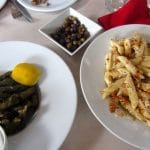 June 8, 2015 Bakalogatos
June 8, 2015 Bakalogatos
Whether you’re a native Athenian or just visiting, Kypseli is not likely to be on your […] Posted in Athens
Published on June 06, 2018
Related stories
October 31, 2014
Mexico CityDía de los Muertos (Day of the Dead), or at least some variation of it, has been an annual celebration in Mexico for over 3,000 years. During the Aztec period, it took the form of a festival in August dedicated to Mictecacihuatl, otherwise known as the Lady of the Dead, who was the ruler of…
November 20, 2017
AthensChange may be inevitable but it’s the last thing we want in a restaurant we cherish. We were reminded of this a few months back when by chance we were taken out to dinner at Piperiá in the Neo Psychiko neighborhood by friends who live nearby. It had been five years since we last visited…
June 8, 2015
AthensWhether you’re a native Athenian or just visiting, Kypseli is not likely to be on your list of favorite haunts unless you happen to have roots there. It’s not connected to the Metro, it boasts neither museums nor fancy boutiques, and yet it must be one of the liveliest districts in Athens. The once elegant…







































